Stimulants, which are sometimes referred to as uppers, are a category of drugs that increase alertness, focus, and energy. Stimulants create these effects by interacting with the central nervous system and boosting the performance of norepinephrine and dopamine, two neurotransmitters that are associated with feelings of pleasure, motivation, and euphoria.
Understanding Stimulant Addiction
Learn about stimulants and substance abuse
The category of stimulants includes a wide variety of substances, including both natural and synthetic versions, as well as legal and illegal varieties. Caffeine and nicotine are both stimulants, as is cocaine, amphetamines, and methamphetamine.
Common medical uses of prescription stimulants include treating symptoms related to attention-deficit/hyperactivity disorder (ADHD), narcolepsy, and certain heart and blood pressure conditions. Prescription medications that contain stimulants include Ritalin, Adderall, Dexedrine, Vyvanse, and Evekeo.
In addition to being misused for purely recreational purposes, stimulants are often abused by individuals who are trying to lose weight, stay awake, increase energy, or improve focus and concentration. Stimulant abuse involves both illegal substances, such as cocaine and methamphetamine, and legal medications, such as Ritalin and Adderall. Cocaine and amphetamine abuse has been a problem for more than a century, while the abuse of ADHD medications has emerged as a prevalent threat in recent decades.
Depending upon the type, amount, and potency of the stimulant being abused, effects can range from a temporary energy increase to irreversible long-term damage and death. If you or someone you know is struggling with stimulant abuse, proper treatment should be sought immediately.
Statistics
Stimulant addiction statistics
Cocaine is the world’s second most trafficked and abused illegal drug and stimulant in the world, trailing only marijuana. In the United States, more than 35 million people admit having used cocaine, with about two million people saying they had used the drug in past month. Cocaine is responsible for about 500,000 emergency room visits every year.
More than 15 million Americans have admitted to abusing amphetamines, including crystal methamphetamine (commonly referred to simply as meth). Experts estimate that about two million people are current users of meth or another amphetamine, meaning they have abused these substances at least one time in the previous 30 days.
Causes and Risk Factors
Causes and risk factors for stimulant addiction
Substance abuse and addiction can be caused by several genetic and environmental factors. For example, many experts note that prescription stimulant abuse has risen among a generation of people who were familiar with the drug because it was so commonly prescribed to so many of them. While no one factor can definitively predict if a person will abuse or become addicted to a stimulant, the following are among the more common genetic and environmental influences, as well as risk factors:
Genetic: Substance use disorders and addiction have a strong family component. People whose parents or siblings have had problems with addiction are much more likely to have similar problems than are people whose family has not history of substance abuse or addiction. Research involving twins who were raised in separate environments and studies with adopted children, both support the understanding that people have a genetic predisposition to substance use disorders and addiction.
Environmental: Family history of substance abuse can also be an environmental influence, as people who grow up in houses where drug use is common are at increased risk for replicating this behavior. Other environmental influences on substance abuse include living or working in high-stress areas, growing up in poverty, associating with peers who abuse alcohol or other drugs, and suffering from abuse, neglect, or other forms of trauma.
Risk Factors:
- Easy access to stimulant-based medications
- Family history of substance abuse and/or mental illness
- Personal history of prior substance abuse and/or mental illness
- Poverty
- Poor stress management capabilities
- Gender (Stimulant abuse is more common among males than among females)
Signs and Symptoms
Signs and symptoms of stimulant addiction
No single sign or set of signs is common among every person who abuses a stimulant. However, many people who engage in this behavior will likely exhibit some or many of the following symptoms:
Behavioral symptoms:
- Doctor shopping (attempting to acquire multiple prescriptions for the same stimulant)
- Borrowing ADHD medications or other prescription stimulants from friends or family members
- Secrecy or deceptiveness regarding whereabouts and activities
- Visiting websites that traffic in illicitly obtained stimulants
- Exhibiting increased energy and lack of apparent need for sleep
Physical symptoms:
- Boost in blood pressure
- Irregular heartbeat
- Heavier than usual perspiration
- Dry mouth
- Rapid breathing
- Loss of appetite
- Weight loss
- Insomnia
Cognitive symptoms:
- Paranoia
- Euphoria
- Increased ability to focus , concentrate, and remember
- Hallucinations and/or delusions
- Increased (and often unrealistic) sense of self-confidence
- Temporarily improved attitude
- Preoccupation with acquiring and using stimulants
Psychosocial symptoms:
- Irritability when unable to acquire stimulants
- Expressions of anxiety
- Out-of-character anger and aggressiveness
Co-Occurring Disorders
Stimulant addiction and co-occurring disorders
Many people who abuse stimulants are also dealing with one or more additional mental health challenges. The following are among the common co-occurring disorders that are experienced by people who engage in stimulant abuse:
- Attention-deficit/hyperactivity disorder (ADHD)
- Bipolar disorder
- Major depressive disorder
- Oppositional defiant disorder (ODD)
- Persistent depressive disorder
- Posttraumatic stress disorder (PTSD)
Effects
Effects of stimulant addiction
Even though some stimulants are widely prescribed and safely used by many people, these drugs are far from harmless. Abusing prescription stimulants, such as Adderall and Ritalin, can lead to dangerous side effects, as can even short-term use of more powerful stimulants such as cocaine. The following effects are those that are known to occur when person abuses stimulants:
- Dehydration
- Irritability
- Panic attacks
- Paranoia
- High blood pressure
- Cardiovascular distress
- Erratic, unpredictable behavior
- Liver and kidney damage
- Damage to nasal passage (if stimulants are being snorted)
- Disorientation
- Apathy and anhedonia
- Depression
Withdrawl & Overdose
Effects of stimulant withdrawal and overdose
Effects of stimulant withdrawal: Depending upon the type of stimulant that a person is abusing, cessation of use can lead to the development of uncomfortable, painful, and even dangerous withdrawal symptoms. The following are among the common withdrawal symptoms that can develop within hours and last for a week or more:
- Strong drug cravings
- Fatigue and exhaustion
- Extreme irritability
- Nightmares, hallucinations, and delusions
- Depression
- Anxiety and paranoia
- Sleep disruptions (both insomnia and hypersomnia)
- Aches and pains throughout the body
Effects of stimulant overdose: Stimulant overdose is a very real risk. Ingesting stimulants in an amount that overwhelms the body’s ability to safely metabolize them puts the user at risk for several dangerous and potentially deadly symptoms, including the following:
- Cerebral hemorrhage
- Psychosis
- Heart failure
- Kidney failure
- Hyperpyrexia (extremely high body temperature)
- Hypertension (high blood pressure)
- Irregular breathing
- Twitches and tremors
- Seizures and convulsions
- Loss of consciousness
- Stroke
- Coma
- Death



